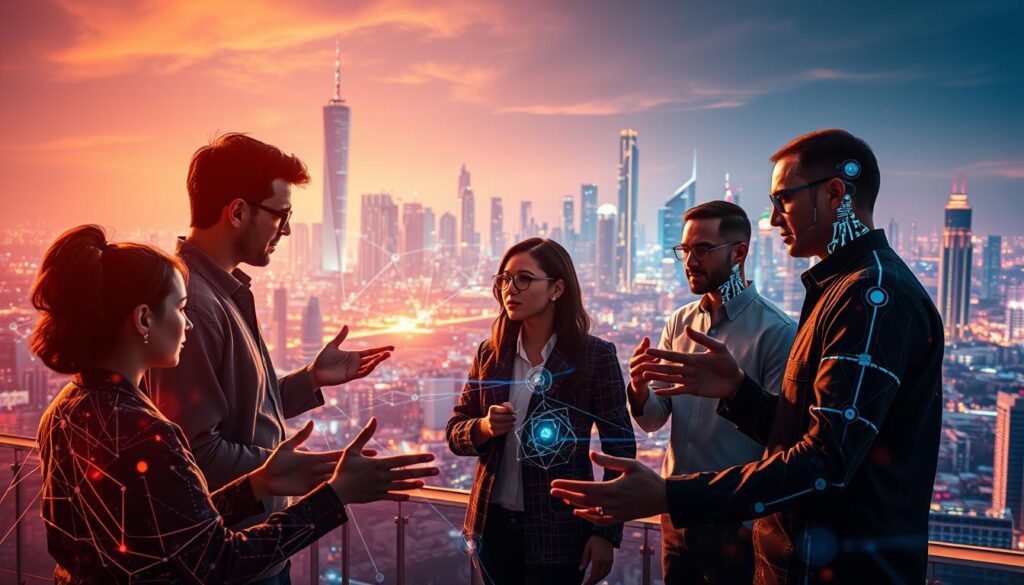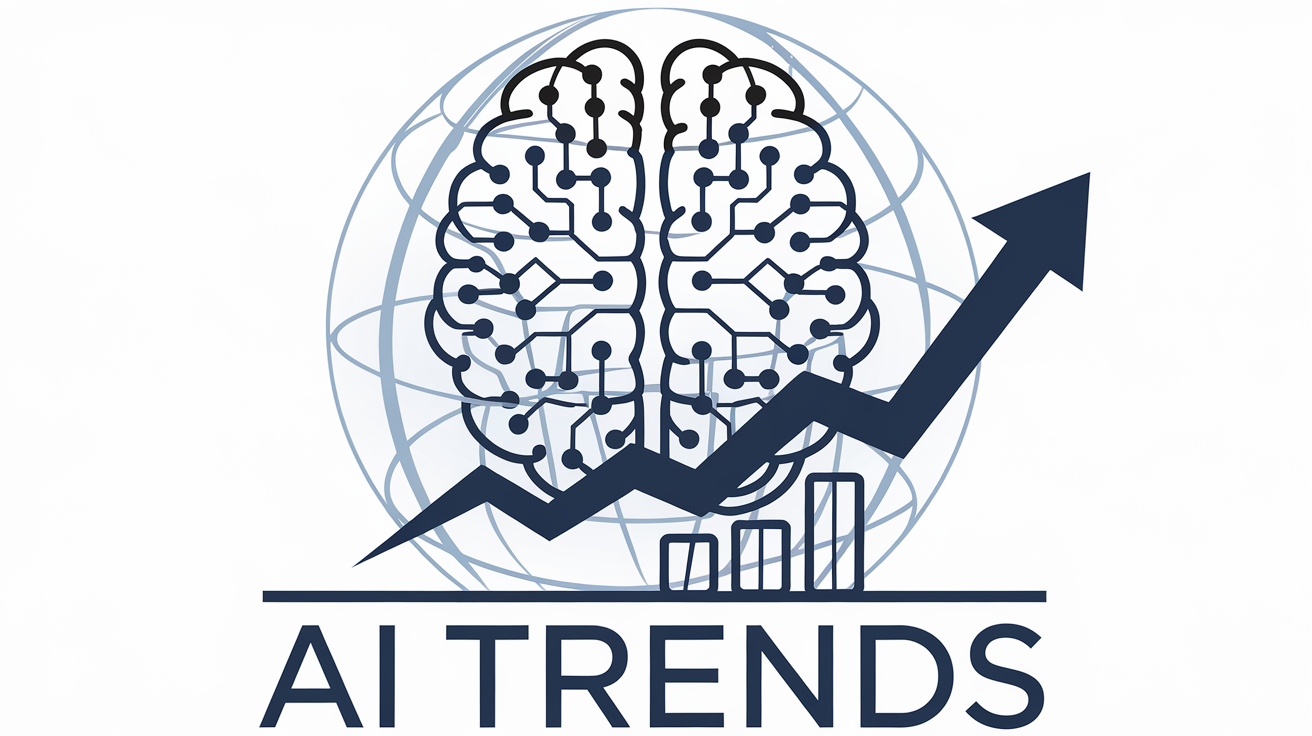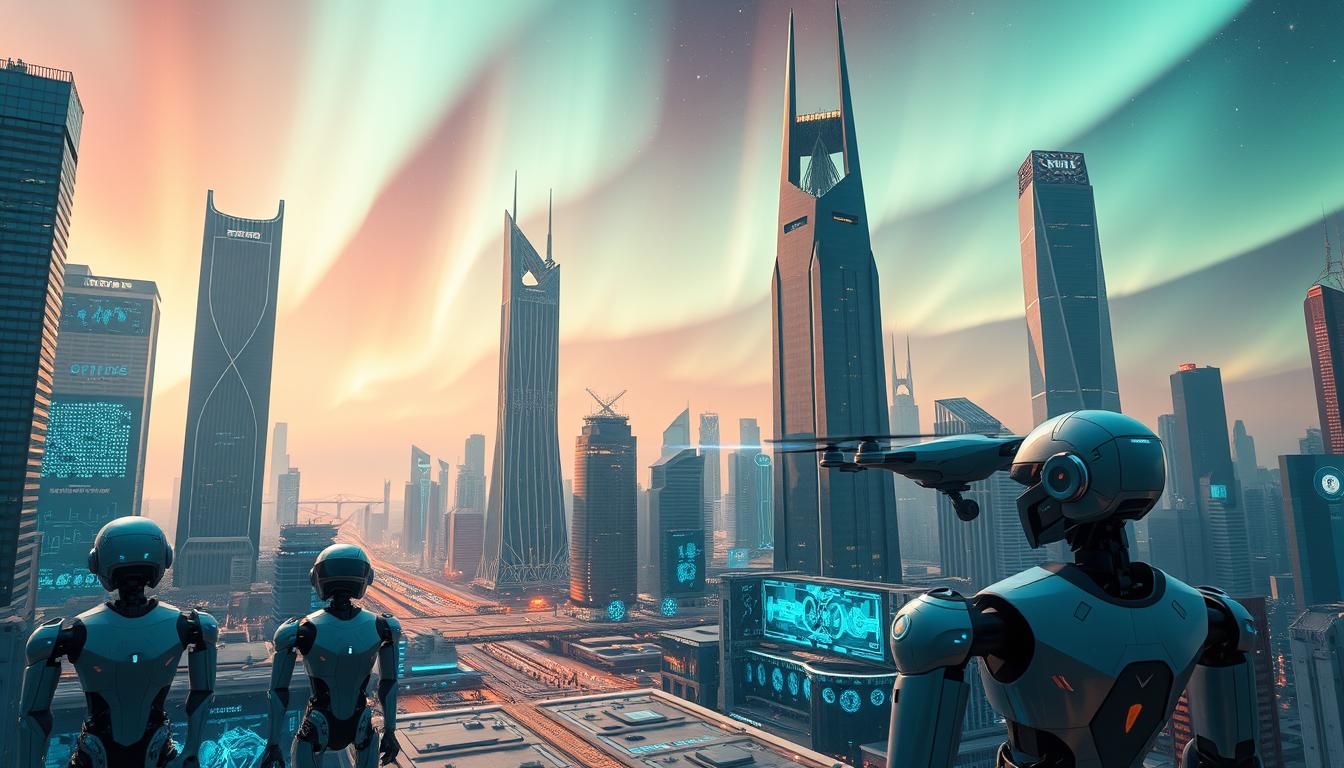Artificial intelligence is changing the tech world, with machine learning leading the charge. New AI trends are set to shake up industries like healthcare and finance. It’s crucial to keep up with these changes.
AI is growing fast, with new uses popping up every day. Machine learning is key to these advancements. It will change how we live and work, making everything smarter and more efficient.
Table of Contents
ToggleKey Takeaways
- Artificial intelligence is driving technological innovation
- Machine learning is a key component of AI trends
- AI is transforming various industries, including healthcare and finance
- The current state of AI innovation is characterized by rapid growth
- AI trends will continue to shape the future of technology
- Artificial intelligence has the potential to revolutionize daily life
The Evolution of Modern AI Technology
Artificial intelligence has changed a lot since it started. Natural language processing is now a big part of AI research. We moved from simple rules to complex neural networks, thanks to deep learning.
This progress has led to AI that can help make business decisions. Predictive analytics is key in this area. It helps predict trends and guide business choices.
AI has also merged with many industries, creating new tools like chatbots and virtual assistants. These tools use natural language processing to talk to users. Predictive analytics helps businesses stay ahead by forecasting trends.
- Introduction of deep learning algorithms
- Development of neural networks
- Integration of AI with Internet of Things (IoT) devices
AI is still growing, and we’ll see even more progress. Expect better natural language processing and predictive analytics. This will lead to smarter AI that can learn and adapt, pushing AI innovation further.
Emerging AI Trends Transforming Industries
AI is changing many fields, like healthcare, finance, and transportation. It uses machine learning to make things more efficient and cost-effective. For example, AI chatbots in healthcare offer personalized help to patients.
AI’s predictive analytics are also changing the game. They help businesses predict trends and risks. This way, companies can stay competitive and grow. Machine learning plays a big role here, as it improves with data over time.
AI is making big waves in many areas. It’s changing how businesses serve customers and maintain equipment. It’s also making marketing more personal.
- Automated customer service
- Predictive maintenance
- Personalized marketing
These new AI trends are changing how businesses work and interact with customers. As AI gets better, we’ll see even more cool uses in different industries.
The future of industry transformation lies in the ability to harness the power of AI and machine learning to drive innovation and growth.
Companies that use AI and machine learning can stay ahead. They need to understand AI’s power and use it wisely to transform their industries.
The Rise of Generative AI and Creative Computing
Generative AI is changing the creative world. It lets machines make high-quality content like images, music, and text. This tech could change how we make and use digital stuff.
Artists and designers can now use AI to improve their work. They can explore new ideas with AI’s help. Creative computing makes this possible.
Generative AI brings many benefits to creative work. It makes things faster and more efficient. For example, AI can create many versions of a design quickly.
This lets artists focus on the creative parts. It also makes creating content cheaper and quicker. This means more people can get involved in making digital stuff.
- Text-to-image generation: This tech lets users make images from text prompts. It opens up new ways to be creative.
- Natural language processing advancements: Generative AI can make text that sounds like it was written by a human. This is useful for chatbots and language translation.
- AI in content creation: Generative AI can make music, videos, and other digital content. It lets us explore new creative ways.
The rise of generative AI and creative computing is exciting. It could change the creative industry a lot. As this tech gets better, we’ll see even more cool uses of AI-generated content.
Machine Learning and Predictive Analytics
Machine learning algorithms help analyze big data, finding patterns and making predictions. This is key in business, where predictive modeling aids in making smart choices. It lets companies stay ahead by using these advanced tools.
Data analysis is vital in machine learning. It helps companies understand their customers and make decisions based on data. Machine learning algorithms can sift through vast data, uncovering trends not seen before. This leads to new insights and a deeper grasp of customer behavior.
Using machine learning and predictive analytics brings several benefits:
- More accurate predictions
- More efficient data analysis
- Better decision-making
Companies can tap into new opportunities and grow by using machine learning and predictive modeling. As this technology advances, we’ll see even more creative uses in the future.
AI in Healthcare and Biotech Innovation
AI is changing healthcare, making medical diagnostics better and faster. Doctors can now look at lots of data, find patterns, and make smarter choices. This has helped patients get better care and saved money.
In biotech innovation, AI is also a big deal. It uses special algorithms and language skills to sift through data. This helps find new drug targets and treatments, offering hope to those with tough diseases.
- Diagnostic imaging analysis
- Predictive analytics for patient outcomes
- Personalized medicine and treatment plans
AI is not just helping patients; it’s also making healthcare cheaper and more efficient.
As AI keeps getting better, we’ll see even more cool uses in healthcare and biotech. It’s set to change how we diagnose diseases, find new medicines, and tailor treatments to each person. AI is on track to greatly improve our health and wellbeing.
Sustainable Technology and AI Solutions
The world faces big challenges in environmental sustainability. Sustainable technology is key to reducing our impact on the planet. Companies like Google and Microsoft are using AI to cut down energy use and waste. This helps them lower their carbon footprint.
AI in sustainable technology brings many benefits. It helps use resources better, cuts down on waste, and makes things more efficient. For example, AI smart grids can predict energy needs and adjust supply. This reduces energy waste and helps the environment.

- Predictive maintenance to reduce equipment downtime and energy consumption
- Smart energy management systems to optimize energy usage
- Sustainable supply chain management to minimize waste and reduce carbon emissions
By using sustainable technology and AI, we can make a greener future. It’s crucial to focus on environmental sustainability as we move forward. AI can help us create a better world for tomorrow.
Ethical Considerations in AI Development
As AI technology advances, we must tackle its ethical sides. AI ethics are key to making AI systems fair, open, and answerable. A big worry is privacy concerns, since AI needs lots of personal data to work well.
Another big issue is bias in AI systems. If not handled, they can make social inequalities worse. To fix this, we need strong rules for AI’s development and use. These rules should cover how data is collected, processed, and stored. They should also ensure AI systems are clear and accountable.
- Use strong data protection to keep user privacy safe
- Make AI systems that are clear, explainable, and fair
- Create rules that make AI developers accountable and responsible
By focusing on AI ethics, we can make sure AI helps society. This needs teamwork from developers, policymakers, and others. Together, we can build a system for responsible AI use.
The Future of Human-AI Collaboration
As we move forward with artificial intelligence, human-AI collaboration is key. It can change the future of work, letting humans do important tasks while AI does the routine ones. The success of this collaboration depends on AI augmentation, which boosts human abilities, not replaces them.
Human-AI collaboration boosts productivity. AI automates simple tasks, freeing humans for complex and creative work. For example, AI tools help with data analysis, letting humans focus on strategy and results. This teamwork can greatly improve efficiency and innovation.
Some examples of human-AI collaboration include:
- Virtual assistants, like Amazon’s Alexa or Google Assistant, handle tasks like scheduling and messaging
- AI tools for data analysis, such as Tableau or Power BI, help humans spot trends in data
- Collaborative robots, or cobots, work with humans in manufacturing and other fields to boost productivity and safety

To make the most of human-AI collaboration, we need AI systems that work well with humans. We must understand human needs and behaviors and be able to communicate effectively. By focusing on human-AI collaboration and AI augmentation, we can create a future of work that is more efficient, innovative, and fulfilling for everyone.
Conclusion: Embracing the AI-Driven Future
The fast growth of AI technology is changing many areas of life. It’s making new ways to work and live. Generative AI and predictive analytics show the endless possibilities of AI.
But, we must think about the ethics of AI. Still, the good it can do is clear. It’s changing the world for the better.
By keeping up with AI and being open, we can solve big problems. We can find ways to live better and sustainably. Together, we can make the AI future better for everyone.
FAQ
What is the current state of AI innovation?
AI has grown a lot, moving from simple rules to complex neural networks. Big steps, like deep learning, have sped up AI progress.
How are emerging AI trends transforming industries?
AI is making things better in many fields, like healthcare and finance. It helps save money and improve customer service. New AI trends could change old ways and open up new chances.
What is the rise of generative AI and creative computing?
Generative AI and creative computing are changing how we create. They help make images from text and improve writing. These tools are changing the creative world and offering new ways to express ourselves.
How is machine learning and predictive analytics transforming data analysis?
Machine learning and predictive analytics are changing how we look at data. They help us understand big data better. This leads to smarter decisions and better planning.
What are the applications of AI in healthcare and biotech innovation?
AI is helping in healthcare and biotech. It makes diagnosing easier, speeds up finding new medicines, and helps tailor treatments. These changes could greatly improve health care and patient results.
How is AI contributing to sustainable technology solutions?
AI is helping make technology more green. It helps use less energy and better manage resources. AI’s role in solving environmental problems is big.
What are the ethical considerations in AI development?
It’s important to make AI right and fair. We need to think about privacy, fairness, and rules. This ensures AI is used in a good way.
What is the future of human-AI collaboration?
AI could make us better at our jobs. It’s key to make AI work well with people. This way, we can get the most out of AI.
read also: The Rise of AI in Cybersecurity: 7 Powerful Ways to Protect Businesses from Emerging Threats

